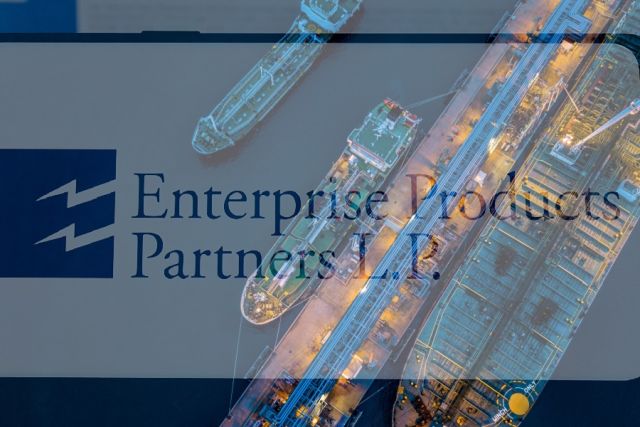
Enterprise Products Partners’ co-CEO disputed capex figures reported in the media regarding its Sea Port Oil Export Terminal. (Source: Shutterstock.com)
Enterprise Products Partners (EPD) is targeting the end of the year to take final investment decision (FID) on its Sea Port Oil Export Terminal project (SPOT) offshore Texas and expects to have two contracts for the project by the end of May.
“The mindset is, we’re not going to move forward on that project until we have the contracts to support that project,” said Brent Secrest, executive vice president and chief commercial officer.
Secrest, speaking during EPD’s first-quarter earnings call on April 30, said SPOT was in an ongoing commercialization process, boosted in early April after the project received a deepwater port license from the U.S. Maritime Administration, an agency under the Department of Transportation.
While the license is a crucial part of project development, some analysts and sources were cautious about SPOT’s success.
On April 24, a Reuters released article reported that the project was struggling to find customers, attributing details to industry analysts and unnamed sources familiar with the contracts. The sources also said the potential costs of the project had ballooned from $1.85 billion to $3 billion.
Jim Teague, director and co-CEO addressed the cost claim directly during the conference call.
“It’s not what was in the Reuters article, by a long shot,” Teague said. The executive did not give a specific capex figure, other than to say that $3 billion was high.
A total of four offshore port projects have been proposed along the Texas coast. SPOT is the only one to won a license.
The SPOT offshore platform would be built about 35 miles off the Southeast Texas coast, close to the Freeport Ship Channel. The facility is designed to simultaneously load two supertankers, each of which can hold 2 MMbbl, at a rate of 85,000 bbl per hour.
Construction would include a pipeline to a planned crude oil terminal in Brazoria Country, as well as a connection to Enterprise’s Houston ECHO terminal.
An offshore loading terminal would provide operational and safety advantages over bringing ships into port. When a tanker is too large to dock in a regional port, shipping companies are forced to load smaller tankers in port, which then meet and fill the larger tankers offshore.
One other U.S. offshore port is in operation — the Louisiana Offshore Oil Port. The port can serve supertankers, but only with Gulf-produced oil. SPOT provides access to crude produced in the Permian Basin.
Enterprise has been developing the SPOT project for five years.
Earnings, results
For the first quarter, Enterprise reported strong volumes on its network, transporting approximately 2.38 MMbbl/d at an increase of 3.5% compared to first-quarter 2023. Enterprise set a record at its crude oil marine terminals as volumes rose 30% over the same time last year to 1.1 MMbbl/d.
Net income increased to $1.5 billion, 5% over first-quarter 2023, resulting in income of $0.66 per unit share.
Recommended Reading
Electron Gold Rush: ‘White Hot’ Power Market Shifts into High Gear
2025-03-06 - Tech companies are scrambling for electrons as AI infrastructure comes online and gas and midstream companies need to be ready, Energy Exemplar CEO says.
Paradoxes and Power: Why DeepSeek AI May Be Good News for Energy
2025-03-05 - The lower cost and power demand of DeepSeek could be a positive for AI adoption and result in increased proliferation and demand, an analyst said.
SLB Launches Electric Well Control Tech to Replace Hydraulics
2025-03-04 - SLB says the new systems reduce costs and provide real-time data for operators.
No Drivers Necessary: Atlas RoboTrucks Haul Proppant, Sans Humans
2025-03-04 - Atlas Energy Solutions and Kodiak Robotics have teamed up to put two autonomous trucks to work in the Permian Basin. Many more are on the way.
E&P Highlights: March 3, 2025
2025-03-03 - Here’s a roundup of the latest E&P headlines, from planned Kolibri wells in Oklahoma to a discovery in the Barents Sea.
Comments
Add new comment
This conversation is moderated according to Hart Energy community rules. Please read the rules before joining the discussion. If you’re experiencing any technical problems, please contact our customer care team.






